#Amazon Advertising Services
Explore tagged Tumblr posts
Text
What Are the Best Practices for A+ Content in Amazon Store Setup in Amazon App Marketing?

In the competitive world of Amazon App Marketing, utilizing A+ Content effectively can be a game-changer for your brand. A+ Content allows sellers to enhance their product listings with rich, multimedia elements, making their products more appealing and informative to potential buyers. This blog explores the best practices for creating A+ Content in Amazon Store Setup to ensure your brand stands out and drives sales.
Understanding A+ Content
A+ Content is a feature available to Amazon sellers, particularly those enrolled in Amazon’s Brand Registry. It allows you to enhance your product descriptions with additional images, text placements, comparison charts, and other multimedia elements. This enhanced content can help differentiate your products from competitors, provide more detailed information, and create a more engaging shopping experience for customers.
1. Focus on High-Quality Visuals
One of the primary advantages of A+ Content is the ability to incorporate high-quality visuals into your product listings. Images are often the first thing customers notice, and they play a crucial role in shaping perceptions about your product's quality.
Invest in high-quality photographs to present your goods from many perspectives. Include lifestyle images that demonstrate how your product is used in real-life scenarios. These images help customers visualize the product in their own lives, increasing the likelihood of a purchase.
In addition to images, consider incorporating videos into your A+ Content. Videos can effectively convey product features, demonstrate usage, and highlight the benefits of your products. Ensure that all visuals are high-resolution and optimized for fast loading to maintain a seamless user experience.
2. Craft Compelling and Informative Text
While visuals are crucial, the text you use in your A+ Content should not be overlooked. Your text should be compelling, informative, and aligned with your brand's voice. Use this space to highlight key features, benefits, and unique selling propositions of your product.
Start with a strong headline that captures attention and clearly communicates the value of your product. Follow this with concise bullet points that outline the most important features and benefits. Avoid using overly technical jargon; instead, focus on how your product solves a problem or enhances the customer's life.
Additionally, ensure that your text is well-organized and easy to read. Break up large blocks of text with subheadings, bullet points, and short paragraphs. This improves readability and helps customers quickly find the information they need.
3. Leverage Comparison Charts
Comparison charts are a powerful tool in A+ Content that allows you to compare your product with other similar products in your lineup. This feature is especially useful if you offer multiple variations of a product or if you want to highlight how your product outperforms competitors.
When creating a comparison chart, focus on the features that matter most to your customers. This might include price, size, materials, or specific functionalities. The goal is to make it easy for customers to see the advantages of choosing your product over others.
Ensure that your comparison chart is visually appealing and easy to understand. Use consistent formatting and clear labels to guide the customer’s eye through the information. This can significantly influence purchasing decisions by reinforcing the value of your product.
4. Maintain Brand Consistency
Consistency in branding is critical across all your marketing channels, and your Amazon Store is no exception. A+ Content provides an excellent opportunity to reinforce your brand identity through consistent use of colors, fonts, and tone of voice.
Ensure that the design elements in your A+ Content align with your overall brand aesthetics. This includes using the same color schemes, typography, and logos that customers associate with your brand. Consistent branding not only helps build recognition but also fosters trust and loyalty among customers.
Your brand's voice should also be consistent throughout the A+ Content. Whether your brand is playful, authoritative, or minimalist, make sure that the tone aligns with the rest of your marketing materials. This creates a cohesive brand experience that resonates with your target audience.
5. Optimize for SEO
Optimizing your A+ Content for search engines is essential for improving the visibility of your products on Amazon. While A+ Content itself doesn’t directly contribute to Amazon’s search rankings, the overall product listing, including the A+ Content, impacts how well your product ranks in search results.
Incorporate relevant keywords naturally into your product titles, descriptions, and alt text for images. Conduct thorough keyword research to understand what terms your target customers are using to find products like yours. By optimizing your content, you can increase the chances of your product being discovered by potential customers.
Additionally, make sure that your A+ Content is mobile-friendly. With more customers shopping on mobile devices, it’s crucial that your content is easy to navigate and visually appealing on smaller screens.
Conclusion
A+ Content is a powerful tool in Amazon Store Setup that can significantly enhance your product listings and drive sales. By focusing on high-quality visuals, compelling text, comparison charts, brand consistency, SEO optimization, and regular updates, you can create A+ Content that not only stands out but also delivers results.
If you're looking to maximize the impact of your A+ Content, consider partnering with a professional Amazon advertising services provider. Additionally, working with a Digital Marketing company can help you ensure that your branding and messaging are consistent across all online platforms, further boosting your brand’s visibility and success in the competitive Amazon marketplace.
#Amazon advertising services#Digital Marketing company#digital marketing#Digital Marketing services company#Amazon Marketing#Amazon advertising#amazon store
2 notes
·
View notes
Text
Amazon Advertising: How to Boost Your Sales to 10X?
Discover expert Amazon Advertising tips to maximize ROI, increase sales, and grow your brand awareness effectively.
#ppc services#ppcadvertising#seo company#seo#ppc ads#seo services#marketingtrends#digital marketing company#digital marketing#socialmediamarketing#ppc campaign#ppc campaigns#ppc advertising#ppc agency#ppc marketing#emailmarketing#online marketing#digitalmarketingservices#digitalmarketing#digital marketing agency#ppc management agency#ppc management service#ppc management company in india#amazon#amazon ads#amazon advertising agency#amazon ad agency#amazon advertising services
0 notes
Text
#Amazon PPC management#Amazon advertising services#sponsored ads optimization#e-commerce PPC campaigns#Amazon ad strategy#Amazon sales growth#PPC budget management#Amazon keyword targeting#advertising on Amazon#Amazon product promotion
0 notes
Text

Maximize Your Sales with Expert Amazon Advertising Management!
Boost your brand with expert Amazon Advertising Management! We create targeted campaigns to maximize visibility, drive traffic, and increase conversions. Achieve higher ROI with optimized strategies and real-time performance tracking. Grow your Amazon sales today!
1 note
·
View note
Text
Amazon Advertising Management Services
In today’s competitive e-commerce landscape, gaining visibility on Amazon is crucial for businesses aiming to thrive. Nibble Software offers specialized Amazon Advertising Management Services to help your brand stand out, attract more customers, and boost sales. With our strategic approach and in-depth knowledge of Amazon’s advertising platform, we ensure your products and brand receive maximum exposure. With years of expertise in e-commerce and digital marketing, Nibble Software is your trusted partner for Amazon advertising success. Let us handle the complexities of ad management while you focus on scaling your business.
For more information visit on:-
#Nibble Software#Amazon Advertising Management Services#tech#Amazon Advertising#Amazon Advertising Services
0 notes
Text
How Amazon Advertising Services Impacts the eCommerce Industry

The eCommerce landscape has experienced a significant transformation in recent years, and one of the driving forces behind this change is the advent of Amazon Advertising Services. As online shopping grows, businesses increasingly leverage Amazon’s advertising tools to reach their target audience, drive sales, and build brand recognition. But what exactly is the impact of Amazon Advertising Services on the eCommerce industry? Let’s explore its key facets and implications.
Understanding Amazon Advertising Services
Amazon Advertising Services provides advertising solutions to help brands and sellers promote their products to millions of Amazon customers. These solutions include Sponsored Products, Brands, Sponsored Displays, and Amazon DSP (Demand-Side Platform). Each format offers unique targeting options and ad placements, allowing advertisers to tailor their campaigns to specific goals.
Key Benefits for eCommerce Businesses
1. Enhanced Visibility and Reach
With Amazon Advertising Services, businesses can achieve a level of visibility that’s hard to replicate on other platforms. The placement of ads within product search results and on product detail pages ensures that the advertisements are seen by shoppers who are already interested in similar items. This targeted exposure helps businesses cut through the noise in the crowded eCommerce marketplace.
2. Improved Conversion Rates
Amazon’s platform is unique because customers visiting it often have a high purchase intent. Ads displayed at the right moment—such as when a user searches for related products—lead to higher conversion rates compared to other advertising channels. This ensures a greater return on ad spend (ROAS) for advertisers.
3. Advanced Targeting Options
Amazon provides sophisticated targeting options, including keyword targeting, product targeting, and audience targeting based on demographics, shopping behavior, or interests. These features enable businesses to create highly specific campaigns that reach their ideal customers, boosting ad efficiency and reducing wasteful spending.
Shaping Consumer Behavior
Amazon’s advertising tools have not only impacted businesses but also reshaped consumer behavior. Shoppers now frequently encounter Sponsored Products prominently displayed alongside organic search results. This has led to:
Faster Purchase Decisions: Ads provide additional information and comparisons, making it easier for consumers to decide quickly.
Increased Brand Discovery: Smaller or newer brands gain exposure, allowing consumers to discover alternatives to established brands.
Competition in the Marketplace
The rise of Amazon Advertising Services has also increased competition among sellers. Businesses that fail to invest in advertising may find it difficult to compete with those that do. This has pushed many brands to allocate larger portions of their marketing budgets to Amazon campaigns to remain competitive.
Broader Impacts on the eCommerce Ecosystem
Amazon’s advertising dominance has had ripple effects across the entire e-commerce industry:
1. Growth of Performance Marketing
As more businesses see tangible results from Amazon ads, the focus on performance marketing has intensified. Advertisers are now prioritizing measurable outcomes, such as sales and ROAS, over traditional marketing metrics, such as impressions.
2. Innovation in Ad Technology
To stay ahead, Amazon continuously enhances its advertising platform with new features, such as automation tools, reporting dashboards, and advanced analytics. This drives innovation in the broader ad tech industry as other platforms attempt to emulate Amazon’s success.
3. Changing SEO Dynamics
Amazon’s ads have altered the way businesses approach SEO. Many sellers now balance organic optimization efforts with paid advertising to dominate search results. This dual approach has become crucial for staying competitive on Amazon.
Conclusion
Amazon Advertising Services has become a cornerstone of the eCommerce industry, offering unmatched opportunities for businesses to connect with consumers and drive growth. From enhanced visibility to improved conversion rates and competitive advantages, the impact of Amazon’s ad platform is profound. For businesses aiming to thrive in today’s competitive landscape, leveraging Amazon Advertising Services is no longer optional but essential.
You can visit this comprehensive guide to learn more about how Amazon Advertising Services can help your eCommerce business grow.
#Amazon Advertising Services#eCommerce Industry#Amazon Ads Impact#Sponsored Products#Sponsored Brands#Amazon DSP#eCommerce Marketing#Amazon Advertising Strategy#Performance Marketing#Digital Advertising#eCommerce Trends#Online Advertising#Amazon Ads Benefits#SEO and Advertising#Amazon Marketing Solutions#eCommerce Business Growth
1 note
·
View note
Text
Amazon Marketing Services by BM Consulting | Boost Sales & Brand Visibility
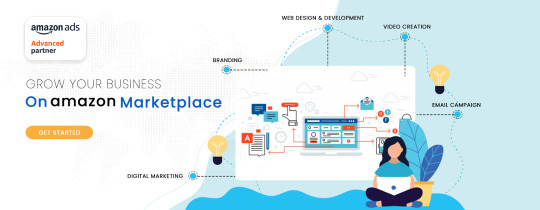
Enhance your Amazon store with BM Consulting's expert Amazon Marketing Services. We drive growth with data-driven strategies, from PPC campaigns to comprehensive SEO. Partner with us to increase visibility, boost conversions, and dominate the marketplace. https://www.bmconsulting.in
#bm consulting#amazon shopping ads#amazon store advertising#amazon services#amazon ppc advertising#amazon pay per click#Advertisement for Amazon#Amazon marketing Services#advertising on amazon#ads for amazon#amazon marketing services#ppc amazon#amazon ppc ads#amazon ads india#amazon ppc marketing#advertise on amazon india#amazon ads in india#amazon ads campaign#amazon campaign#amazon advertising campaign#amazon sponsored ads#amazon ads manager#amazon advertising management#sponsored amazon ads#amazon advertising services#amazon display ads#amazon ads services#amazon ads cost#amazon display advertising#amazon headline search ads
0 notes
Text
What is the Google Data Leak about?
Discover the critical aspects of the recent Google data breach in our detailed blog. We cover the extent of compromised user data, its impact on user trust, and the resulting disruptions in online advertising. For expert support in navigating these challenges and optimizing your Amazon advertising strategies, turn to Services4Amazon, an experienced Amazon advertising agency. Get started today by visiting services4amazon.com or contacting us at [email protected].
#amazon advertising services#amazon advertising agency#amazon consulting services#amazon marketing agency
0 notes
Text

Introducing the Amazon Search Query Performance (SQP) Dashboard - your secret weapon for conquering the world of e-commerce! 🛒📊
With SQP, you can dive deep into your product's performance metrics, from impressions to clicks and sales. 📈📣 Discover your market share with impression share, click share, and sales share data. 🌟
It's like having a treasure map 🗺️ to boost your Amazon game! 💪💼
Say goodbye to guesswork and hello to data-driven success! 🎯✨
Connect With Our Experts to Know More!🛒📊
#amazon advertising services#amazon seo services#amazon listing optimization services#amazon ads company#amazon advertising agency#amazon listing service#amazon seo agency#amazon advertising campaigns
0 notes
Text
Looking to boost your Amazon sales and visibility? Gonukkad offers a comprehensive suite of Amazon advertising services tailored to your needs. Let us guide you through the intricacies of Amazon's platform, helping you achieve your sales goals and establish a strong brand presence.
0 notes
Text
How to Create Effective Store Pages in Amazon Store Setup in Amazon App Marketing

Creating effective store pages in Amazon Store Setup is crucial for any brand looking to make an impact in Amazon App Marketing. These pages act as digital storefronts, offering a dedicated space to showcase your products, brand story, and special offers. If executed well, these store pages can significantly enhance your Amazon Marketing strategy, driving more traffic, increasing conversion rates, and ultimately boosting sales. This blog will guide you through the essential steps to create store pages that stand out and resonate with your target audience.
Understanding the Importance of Amazon Store Pages
Before diving into the creation process, it's essential to understand why Amazon Store pages are vital. Unlike product listings, Amazon Store pages provide a branded shopping experience. They offer more control over how your brand and products are presented, allowing you to curate the shopping experience to align with your brand identity. This is particularly beneficial in a competitive marketplace like Amazon, where differentiation is key.
Amazon Store pages are also a powerful tool for Amazon Marketing. These pages can be used to funnel traffic from Amazon ads, social media, and other external sources directly to your store, creating a more cohesive shopping experience. When paired with effective Digital Marketing strategies, Amazon Store pages can become a central hub for customer engagement and sales.
Step 1: Define Your Brand Identity
The first step in creating effective Amazon Store pages is defining your brand identity. Your store should reflect your brand’s personality and values, which means every element, from the design to the content, should be consistent with your overall branding.
Start by outlining your brand’s core message. What information about your brand do you want your customers to know? What makes your products unique? Answering these questions will help you develop a clear and consistent brand narrative that you can weave into your store pages.
Step 2: Structure Your Store for Easy Navigation
An effective Amazon Store page is easy to navigate. The structure of your store should allow customers to find what they’re looking for with minimal effort. To achieve this, you need to organize your store into logical categories.
Start by categorizing your products based on type, use, or target audience. For example, if you sell beauty products, you could create categories for skincare, haircare, and makeup. If you have a wide range of products, consider creating subcategories to make it even easier for customers to find specific items.
In addition to product categories, you should also include sections for best sellers, new arrivals, and special offers. These sections can help drive sales by highlighting popular and promotional items.
Step 3: Use High-Quality Visuals
Visuals play a crucial role in the success of your Amazon Store pages. High-quality images and videos not only make your store look professional but also help build trust with potential customers. Consumers are more likely to purchase a product when they can see clear, high-resolution images that showcase its features and benefits.
When selecting visuals for your store, make sure they are consistent with your brand’s aesthetic. Use images that highlight your products’ key features and benefits. If possible, include lifestyle images that show your products in use, as this can help customers visualize how they would use the product in their own lives.
Step 4: Optimize for Mobile
With more consumers shopping on mobile devices than ever before, it’s crucial that your Amazon Store pages are optimized for mobile. This means ensuring that your store’s design is responsive and that all images and text are clearly visible on smaller screens.
Amazon Store pages are automatically optimized for mobile, but there are still steps you can take to ensure a seamless experience. Avoid using small fonts or overly complex layouts that may be difficult to navigate on a mobile device. Also, make sure your images and videos load quickly, as slow load times can lead to higher bounce rates.
Step 5: Incorporate SEO Best Practices
Just like your website, your Amazon Store pages should be optimized for search engines. This includes both Amazon’s internal search engine and external search engines like Google. By incorporating SEO best practices, you can increase the visibility of your store pages, driving more organic traffic.
Start by conducting keyword research to identify the terms your target audience is using to search for products like yours. Once you have a list of relevant keywords, incorporate them into your store’s content, including product descriptions, headlines, and image alt text.
In addition to keyword optimization, you should also focus on creating high-quality, informative content. This could include detailed product descriptions and FAQs that provide valuable information to your customers. By providing useful content, you can increase the chances of your store pages ranking higher in search results.
Conclusion
Creating effective store pages in Amazon Store Setup is a critical component of successful Amazon App Marketing. By following these steps, you can build a store that not only showcases your products but also enhances your brand’s presence on Amazon advertising services company. Remember, the key to success is consistency—consistently aligning your store with your brand identity, optimizing for SEO, and continually monitoring performance. With the right approach, your Amazon Store pages can become a central hub for driving traffic, increasing conversions, and boosting sales.
For expert help in creating and optimizing your Amazon Store, consider working with a professional Digital Marketing agency. They can provide the tools and expertise needed to make your store a success, ensuring that it meets the needs of both your customers and your business.
#digital marketing#amazon advertising company#amazon marketing#amazon store#digital marketing services#amazon advertising services#Amazon Marketing services company#Amazon advertising company#Digital Marketing company
2 notes
·
View notes
Text
#amazon advertising agency#amazon advertising services#amazon advertising solutions#amazon ads services#amazon ppc experts#amazon advertising campaigns
0 notes
Text
WHAT IS AMAZON ADVERTISEMENT
1.Introduction
A. Definition of Amazon Advertising: This section provides a brief definition of Amazon Advertising, which refers to the advertising services offered by Amazon to businesses selling products on its e-commerce platform.
Read More

1 note
·
View note
Text
How Dayparting for Amazon Sellers Is Driving Fast Growth
Discover how the Amazon PPC dayparting strategy helps sellers optimize ad spend, boost sales, and achieve faster growth. With Amazon advertising services playing a pivotal role in driving visibility, this blog delves into the essentials of dayparting and how it can revolutionize your campaigns.

What is Dayparting for Amazon Sellers?
Dayparting, also known as ad scheduling, is a strategy where sellers schedule their Amazon PPC campaigns to run during specific hours of the day or days of the week. Instead of letting ads run 24/7, dayparting ensures your ad budget is spent during periods when your target audience is most likely to convert. This data-driven approach aligns with shopping trends, leading to better ad performance and reduced waste.
How to Determine the Best Times to Sell on Amazon
To make the most of dayparting, you need to identify the peak hours when your customers are shopping on Amazon. Here’s how:
Analyze Historical Data: Use Amazon’s reports to review performance metrics like click-through rates (CTR) and conversion rates by hour and day.
Understand Your Audience: Consider your product’s target demographics and their shopping habits. Are they morning browsers, afternoon impulse buyers, or late-night shoppers?
Test and Iterate: Run experiments by scheduling ads during different times and measure performance to refine your strategy.
How to Implement Dayparting for Amazon PPC Campaigns
Once you’ve identified optimal times, implement dayparting using Amazon’s advertising console or third-party tools. Follow these steps:
Access Campaign Settings: Navigate to the campaign manager in the Amazon Advertising Console.
Set Scheduling Preferences: Adjust the time and day settings for when your ads should be active.
Monitor Performance: Regularly review reports to ensure the scheduled times yield maximum ROI.
Benefits of Dayparting for Amazon Sellers
Dayparting offers several advantages that can transform your advertising strategy:
Improved ROI: By focusing ad spend on peak shopping hours, you maximize the return on your investment.
Better Budget Utilization: Avoid wasting money on ads during low-conversion times.
Enhanced Ad Relevance: Reach customers when they’re most likely to engage and purchase.
Competitor Edge: Stay ahead by capturing high-conversion traffic during specific timeframes.
How to Optimize Amazon Advertising Budgets Based on Peak Hours
Optimizing your budget involves more than just setting a schedule. Consider these tips:
Segment Campaigns: Create separate campaigns for different times or days to tailor bids and creatives.
Use Dynamic Bidding: Leverage Amazon’s dynamic bidding options to adjust bids based on real-time performance.
Allocate Budget Strategically: Reserve higher budgets for peak periods and limit spending during slower times.
Free Dayparting Template for Amazon Sellers
To simplify dayparting, use our free template. It helps you:
Track hourly and daily performance metrics.
Identify peak shopping times.
Plan and schedule campaigns effectively.
Download your free dayparting template here.
Why Dayparting Matters in 2024 and Beyond
The e-commerce landscape is becoming increasingly competitive, and ad costs are rising. In 2024, leveraging advanced strategies like dayparting is crucial for sellers looking to stay ahead. As shopping behaviors evolve, dayparting offers the flexibility to adapt to new trends and maintain efficiency.
Final Thoughts
Dayparting is more than just a scheduling tactic; it’s a growth enabler for Amazon sellers. By focusing on peak hours and optimizing your budget, you can drive sales, reduce costs, and improve overall campaign performance.
Boost Your Sales with Amazon PPC Dayparting Strategy from YourSeller
At YourSeller, we specialize in Amazon advertising services designed to help you scale. Our dayparting strategies are tailored to maximize your growth potential. Let us handle the complexities while you focus on growing your business.
Ready to take the next step? Contact YourSeller today!
How to Make Your Products Visible in Amazon Search Filters
In addition to dayparting, visibility in Amazon’s search filters plays a key role in driving sales. Here’s how to optimize:
Optimize Keywords: Include relevant and high-ranking keywords in your product listings.
Enhance Product Titles: Make titles concise and keyword-rich.
Use High-Quality Images: Ensure your images meet Amazon’s standards and showcase your product effectively.
Encourage Reviews: Positive reviews improve search rankings and buyer confidence.
By combining these tactics with dayparting, you can achieve unparalleled growth in your Amazon business. For more insights, visit How Dayparting for Amazon Sellers Is Driving Fast Growth .
0 notes
Text
Amazon Advertising Services
Boost your brand visibility and drive sales with our expert Amazon Advertising Services at Nibble Software! Whether you're launching a new product or aiming to outperform competitors, we create targeted ad campaigns that deliver results. From Sponsored Products and Sponsored Brands to Display Ads, we leverage Amazon's powerful advertising tools to connect you with the right audience. Our services include strategic campaign management, keyword optimization, performance tracking, and regular insights to maximize ROI. Let us handle the complexities of Amazon advertising so you can focus on growing your business. Elevate your brand presence on Amazon with Nibble Software Advertising Services today!
For more information visit on:-
1 note
·
View note
Text
Leverage Amazon DSP For Cross-Channel Advertising in 2023
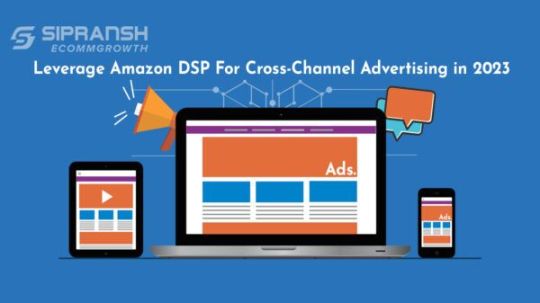
If you have attempted everything on Amazon but still cannot match your customer acquisition goals, this post is meant for you. In this blog post, we will discover everything about Amazon’s Demand Side Platform (DSP), what it is, the types of ads included, how it works, and everything advertisers need to know. But first, we will explain in brief Amazon’s Advertising Structure.
Although Amazon welcomes over 2 billion visitors a month, your audience may not be one of them. Amazon has also raised its ad products so much in the past years that customers often get overwhelmed with the ads. If you wish to grow your reach and appeal to fresh customers, Amazon’s demand-side platform (DSP) may be the solution. It is an ad platform designed to engage off-Amazon audiences specifically and get them to Amazon.
Shoppers can discover these ads in many different forms, including mobile banner ads, mobile interstitial ads, desktop display ads, in-stream video ads, image and text ads, and many more. Any vendors and third-party retailers can use Amazon DSP to build brand awareness and retarget possible customers. Believe us if we say that Amazon is a paradise for shoppers, sellers, and advertisers. If you don’t believe then take a glimpse at the stats mentioned below:
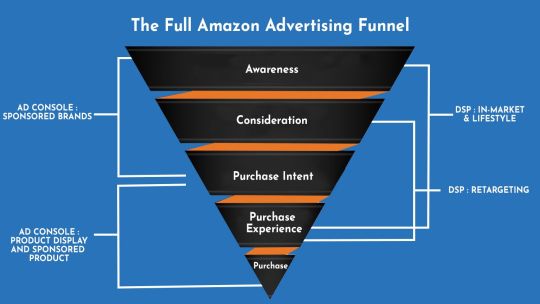
Amazon.com generates 50% of all e-commerce sales and 5% of the total US retail sale.
Over 95 million US citizens have a Prime membership, and they spend roughly over $1.4 thousand per year. According to a survey driven by Advertiser Perceptions, Amazon encounters approx 2 billion visitors per month. Therefore, Amazon is the favored DSP platform for 41% of advertisers.
Being a site solely dedicated to buying products and where shopper clearly expresses their buying intention, Amazon has approached accurate purchase intent data, which is unparalleled in quality and reach by being a website only dedicated to purchasing products, also where shopper plainly expresses their buying intention. It is a no-brainer that is why the Amazon Advertising platform entices massive brands and advertisers.
We recommend reading our guide if you are new to the Amazon Demand Side Platform. This guide will teach you the basics of using Amazon Sponsored Advertising, including creating an account, setting up your first campaign, and tracking your results.
What Is Amazon Demand Side Platform (DSP)?

Amazon Demand Side Platform (DSP) is an advertising platform that allows advertisers to programmatically buy and manage display, video, and audio ad inventory across Amazon-owned and third-party platforms. The platform uses data from Amazon to help advertisers target their ads to specific audiences based on demographics, interests, and past purchasing behavior. Advertisers can also use their first-party data to further refine their targeting. Amazon DSP offers a variety of ad formats including display, video, audio, and custom ads. Advertisers can create and manage campaigns using a self-service interface or work with an Amazon Advertising representative to create and optimize campaigns. Hence, Amazon DSP provides advertisers with a powerful tool for reaching targeted audiences at scale across Amazon’s network of platforms and partner sites.
You can use Amazon DSP to reach audiences on:
Amazon website
Fire TV
IMDb
Freedive (IMDb Streaming)
Kindle
Apps
Published Partners
Twitch
Third-Party Exchanges
Digital Signage Ads
Benefits Of Amazon’s DSP
1. Advanced Targeting Features: Every seller wishes Amazon’s advertising campaigns had additional advanced targeting methods like:
Geographic location
Demographics
Date/Time schedules
Segmentation capabilities
While sponsored products, sponsored brands, and sponsored displays do not contain these capabilities, DSP does.
Here is a sample list of additional targets that DSP has:
Mobile versus desktop-specific ads
A/B testing creative
Ad frequency per unique visitor
Ad placement, above or below the fold
Specific domains (can exclude or include)
ZIP code
In-market audiences
2. Customization Through User-Built Audiences: Do you want to target customers who purchased a product from your brand but haven’t in the past ten months? You can do that through Amazon DSP. Or, Do you ever want to build an audience to target people who purchase from your competitors? You can accomplish that through Amazon DSP.
Is your product perfect for shoppers who have just recently purchased a winter coat? A baby monitor? Wine glasses? Grab those ASINs and produce an audience through Amazon DSP. Building these audiences on DSP is a more recent feature of DSP.
3. Dynamic Targeting: Data is a mighty thing, and using it to determine where to advertise your product next is incredibly effective. However, there is something that you cannot control that can mess with your data or dispute your strategy.
Some examples of this are:
Influencers/social call-outs you didn’t plan for
Pandemics (Hello, COVID-19)
OOS (Out of Stock)
Reformulations (supplement brands especially)
Domain algorithms changing
All of the mentioned above can drastically change your strategy. Dynamic campaigns are necessary because they detect the shifts in the landscape and tweak the ads accordingly. It can be pushing the placement of the ad to the top of the site page to increase impressions, concentrating spending on different innovative sizes that callout discounts, having an ‘add to cart’ button, or skillfully moving the domain ads to reach where audiences are interested in your product. This kind of relaxed advertising is a great benefit.
4. Retargeting: Attaining new customers is crucial for brand growth. However, keeping repeat purchasers is a more inexpensive way to use your ad dollars. When brand awareness campaigns aim toward familiarizing consumers with your product, campaigns focused on repeat buyers have a much higher immediate return. You can reach out and re-engage shoppers who have purchased your brand before by using ASIN and pixel retargeting. It is Pixel retargeting when you pursue potential customers with pixels positioned on your website and linked to your Amazon DSP account. It means you’re “tracking” those customers so you can show them your product ads. ASIN retargeting is identical. However, you follow buyers from your product page on Amazon instead of your website.
The Amazon DSP Retargeting Capabilities Can Support You:
Cross-sell complementary products to site visitors or prior customers.
Re-engage people who have visited your site to improve brand awareness.
Familiarize previous site visitors or customers with new products they may like.
Remind previous consumers when they’ll need to repurchase your product.
What Transformations Happened In 2018 In Amazon Advertising?
Several changes took place in Amazon Advertising in 2018. Here are some of the most important ones:
1. Rebranding of Amazon Marketing Services (AMS) to Amazon Advertising: In September 2018, Amazon rebranded its advertising platform, Amazon Marketing Services (AMS), to Amazon Advertising. Earlier, Amazon sold its ad products through three different ad platforms – Amazon Marketing Services (AMS), Amazon Advertising Platform (AAP), and Amazon Media Group (AMG). Now, all these have combined in one marketplace called Amazon Advertising. Amazon Advertising Platform is now Amazon Demand Side Platform (DSP). They did this to reflect the platform’s expanded capabilities and the growing range of advertising solutions that Amazon offers.
2. Introduction of new ad formats: Amazon introduced several new ad formats in 2018, including Sponsored Display ads, video ads for mobile app interstitial placements, and sponsored brand video ads. These new ad formats provide advertisers with more options to reach customers on Amazon.
3. Enhanced targeting capabilities: Amazon enhanced its targeting capabilities in 2018, allowing advertisers to target specific customer segments, such as customers who have previously purchased similar products or customers who have searched for similar products on Amazon.
4. Integration with external advertising platforms: Amazon Advertising is also integrated with external advertising platforms, such as Google Marketing Platform and DataXu, making it easier for advertisers to manage their Amazon campaigns alongside their campaigns on other platforms.
5. Amazon attribution: Amazon also launched Amazon Attribution in 2018, a measurement solution that allows advertisers to measure the impact of their non-Amazon digital marketing channels on Amazon sales. This enables advertisers to make more informed decisions about their marketing spend and optimize their campaigns for better results.
Amazon DSP Ad Types
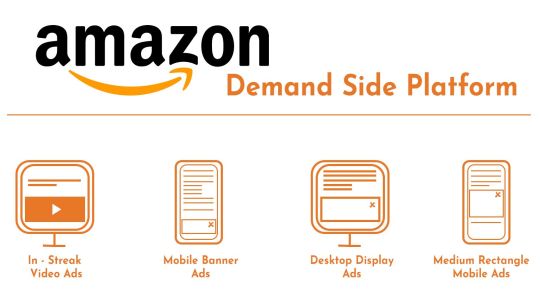
Now that you know how to target the correct audience, produce some ads. Here are four main ad types available to your brand through DSP.
1. Responsive eCommerce Creative (REC)
The very well-known ad type, Responsive eCommerce Creative (REC), initially became available to all marketers on Amazon DSP in January 2021. Advertisers can add up to 20 distinct ASINs to the build when building a REC, and they can select from up to 10 different supported ad sizes that will populate automatically based on the line item target type and ad format. These ads make it simple to create ads and optimize them using machine learning. Responsive eCommerce Creative has taken the place of Dynamic eCommerce Ads (DEA), which are no longer maintained. (REC).
2. Static Ads
Because static advertisements lack dynamic aspects, they require special calls to action, such as “Shop Now.” These advertisements should be used as mid- and upper-funnel strategies to entice customers and increase brand awareness. These advertisements link back to an Amazon product detail page, storefront, or personalized landing page.
3. Video Ads Through DSP
A powerful approach to sharing your brand’s narrative and engaging your audience on an emotional level is through video. Through DSP, video advertising can appear either as a display ad or within the video content itself (in-stream video). (out-stream video). Through DSP, you may link your video advertising to your website or a product detail page on Amazon. By using DSP to create video advertising, you can also use Amazon’s audience data to target relevant customers. When a customer is looking through Amazon product listings, they may run into these live advertisements in and around the product listings.
Video ads can help to:
Create an engaging ad experience
Convey your brand message
4. Over-The-Top Video Ads (OTT)
On the DSP platform, Amazon’s OTT advertising is also displayed. These full-screen, unskippable advertisements are an excellent approach to reaching millions of viewers of connected TV sources. (like the Amazon Fire TV Stick). Although you can target particular Amazon customers, you should be aware that these adverts cannot be clicked on.
5. Mobile Full-screen Interstitial Ads:

Using the Mobile Ads API, app developers may incorporate full-screen ads into their applications. These ads have a noticeable close button and an AdChoices icon, but they are not seen on Amazon Mobile Shopping. For tablets and smartphones running iOS, Android, and Fire, interstitial ads are supported. There are two different interstitial ad templates offered by Amazon. Both templates can be expanded to fit any mobile device’s screen size.
1. Full-Screen Image: Full-Screen Image, as its name implies, uses the entire screen of a device to display a single clickable image. The image will by default be scaled to show a guaranteed “safe zone.” You may add a video to the safe zone in the center of the full-screen template. A thumbnail video of 1280 x 720 pixels and a background image of 2560 x 2560 pixels are required for videos with a recommended runtime of less than 15 to 30 seconds.
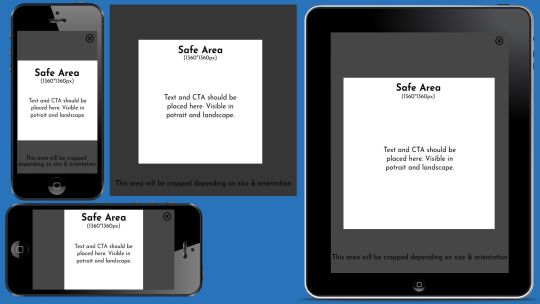
Advertisers are also allowed to add customer reviews along with the date. The format should be Amazon’s gold star and 49 points Arial fonts, as shown above.
Things to keep in mind
2560 × 2560 pixels is the ideal size for the background image. To ensure that it is visible and tappable, all the content, logos, and call-to-action language should be positioned within the safe zone of 1360 x 1360 pixels.
The image must not exceed 2 MB in size.
Give the safe zone a conspicuous call to action button so that clients will know where to tap. The button’s size should be greater than 160 pixels.
Legal disclaimers should not exceed two lines in length and have a minimum font size of 48 points.
Leave out the border
White backgrounds should not be used for safe zone content. Give the place a variety of colors, designs, or lifestyles.
No graphic should display to separate your advertisement into pieces.
If an advertisement links to Amazon, it must display the Amazon logo or mention Amazon in the language.
2. Medium Rectangle: The center of the screen will have a 300 × 250-pixel advertisement with a customizable background. Advertisers using a ready-made mobile ad template can utilize this format for mobile devices.

Things to keep in mind
The banner must be created at 2X resolution (600 x 500 pixels) because it is the only component and will be displayed in high-quality.
Image size must be less than 100kb.
The legal text is one line alone.
If an advertisement links to Amazon, it must display the Amazon logo or mention Amazon in the language.
6. Mobile & Desktop Web Display Ads:
Standard-sized adverts for optimized display on Amazon and other websites around the internet are available for desktop and mobile devices. Advertisers can create the following types of banners, among others:

(300 x 250 pixels) Medium Rectangle
(728 x 90 pixels) leaderboard
Skyscraper that is wide (160 x 600 pixels)
(300 x 600 pixels) Large Rectangle
Billboard (970 x 250 pixels; Offsite only)
Mobile Leaderboard (need 320 x 50 to 640 x 100 pixels at 2X)
Mobile Detail and Search Result Page (1242 x 375 pixels @3X needed) (414 x 125 pixels)
7. Mobile Banner Ads:
Advertisers may reach and target mobile users on third-party Android, Fire Tablet, and iOS mobile applications by using DSP Mobile Banner Ads.
Four ad banner sizes are available:
320 x 50
300 x 250
414 x 125
728 x 90
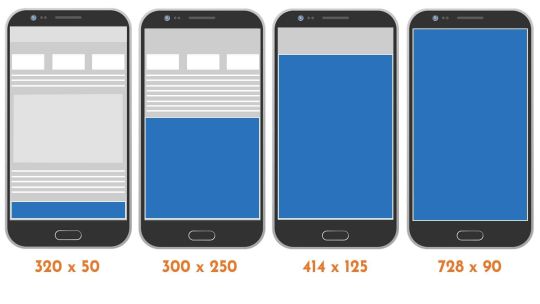
Things to keep in mind:
To ensure a high-quality image on all devices, 320 x 50 banners must be designed in 2X resolution (640 x 100), and 414 x 125 banners at 3X resolution (1242 x 375). Other banners ought to be created at a 2X resolution for optimal results.
A corner AdChoices label must be included on the banner.
The backdrop image ought to be uncomplicated and unobtrusive.
The text should just be brief.
Including a 1-pixel border
The advertiser’s name or logo must be present.
Include a heading or message in the body
GIFs are not advised.
If an advertisement links to Amazon, it must display the Amazon logo or mention Amazon in the text.
How To Use Amazon DSP?
Make sure your product is retail-ready before you start using the upper-funnel methods by making sure your:
The pictures are excellent.
Descriptions and bullet points are properly optimized.
You have a rating of at least 3.5 stars.
Additionally, we advise concurrently executing Ad Console campaigns for branded queries. Branded searches will rise if your DSP strategies succeed and you raise brand recognition. Not every product has the funding necessary for a full-funnel plan, nor does every product make sense to run year-round. Then, as needed, layer in mid- to upper-funnel efforts by maintaining an always-on approach to retargeting.
How Does Amazon DSP Work?
All brands selling on Amazon, including manufacturers, vendors, third-party sellers, and sellers who do not sell on Amazon, have access to Amazon’s audience thanks to Amazon Display Advertising. It is excellent for retailers who desire to:
Generate brand awareness
Enlarge your client base beyond the capabilities of the advertising console
Utilize the Amazon customer base
Identify users based on their lifestyles
Obtain quality traffic
Target customers based on their buying patterns and past purchases
Recent Updates To The DSP Interface:
The four major changes to the Amazon DSP user interface were released by Amazon in the second week of March. These improvements were made in response to suggestions made by program participants. The following areas have seen streamlining thanks to Amazon:
1. Navigation: The platform’s overall “look and feel” has changed as a result of Amazon’s most important update. The retail behemoth claims that using the Amazon DSP will now be easier and more effective. To improve user experience, the new layout makes buttons, toggles, and campaign status more noticeable.
2. Bulk Editing: DSP users may now quickly bulk edit line item targeting settings for the domain, audience, and location. Advertisers can apply the modified parameters across all lines of the chosen products after choosing them.
3. Custom Reporting: With the help of this capability, DSP users may design a specific report that meets their needs. The Amazon DSP report center is where they may later save and access it. Additionally, advertisers can choose exactly which columns to include. The report can be distributed to the designated recipients once it has been produced.
4. Creative Moderation: According to Amazon, it is working on “a number of improvements that will reduce the turnaround time for creative approval.” One of them is that they have cut down on how long it usually takes to notify advertisers when you revised your creativity.
Conclusion:
Amazon advertising options are a lot more useful than you think. Your shoppers may not be there yet, but Amazon’s advertising options can get you right in front of them. It is because their ad solutions are not limited to the platform. The number of brands that use Amazon DSP has increased by 50% this year. If you’re hoping to increase sales, new customer acquisition, and exposure, Amazon DSP may be a great option for you. To learn more about how you can grow your e-commerce brand, get in touch today with SIPRANSH ECOMMGROWTH.
#amazon advertising services#amazon consultant#Amazon DSP#Amazon PPC Advertising#Amazon SEO Experts#SIPRANSH ECOMMGROWTH
0 notes